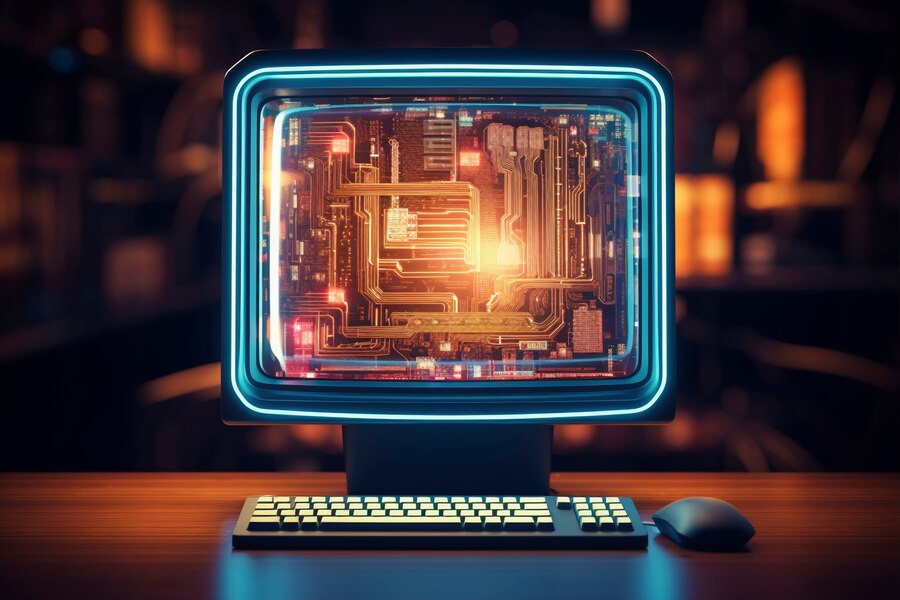CCTV has developed into an intriguing field combining conventional security applications with state-of-the-art insights to improve businesses and our lives.
The days of cameras recording everything for us to see later are long gone. Instead, today’s proactive toolkit includes commercial video surveillance system as part of operations, health and safety, building management, security, and customer research.
CCTV has made it feasible to move from a retrospective to a forward-looking perspective by combining real-time video with various other technical advancements to enable quicker, more informed decision-making.
In this piece, we’ll examine the new CCTV trends that we believe will significantly impact 2024 and discuss the factors propelling them forward.
1. A faster rate of cloud computing adoption
Cloud computing is necessary to maximise the potential of CCTV technologies, including AI, IoT, machine learning, and IP-based cameras. To make the most of this cutting-edge technology, businesses must take a few steps in their digital transformation path.
Businesses can expand their commercial video surveillance systems infrastructure with cloud-based systems to handle the growing amount of data produced by sophisticated analytics and high-resolution cameras.
2. Identifying objects
You guessed it: object recognition makes real-time object identification possible using artificial intelligence and deep learning algorithms. This can be applied to improve security protocols and present chances for more in-depth video analytics to support corporate plans.
For instance, object recognition in the retail industry helps us to gather additional data about how customers behave when they visit malls or businesses, enabling us to respond to inquiries such as: how do they move through the area? How many individuals are pushing strollers there? Which regions do people most frequently visit?
3. A focus on solid cybersecurity and data protection
Data privacy regulations should never be broken, even as CCTV systems become more sophisticated and the volume of data we gather increases. It is the duty of those using video surveillance to guarantee privacy protection at all times.
It is a bit of a problem. We utilise commercial video surveillance systems for security, but because it incorporates cutting-edge technology, it requires extra protection to guard against cyberattacks. A zero-trust approach to cloud security and a general emphasis on access controls, encryption technologies, and frequent security audits are used to achieve this.
4. Thorough investigation of incidents and events
A notable tendency toward in-depth event and incident analysis characterises the future of CCTV. We won’t have to wonder why a protocol didn’t work correctly or what happened before an issue occurred. We will receive an intelligent analysis of all the data.
commercial video surveillance systems are developing from basic tools for observation that we can select to view to more advanced, proactive platforms that can analyse complex events automatically.
With the help of this development, computers can now automatically identify and evaluate complicated occurrences, providing detailed insights into user behavior, activities, and any security risks.
With the use of video analytics, we can go even deeper into the subtleties of events to refine response plans, allocate resources more efficiently, and take away important lessons for future development.
5. Thorough investigation of incidents and events
A notable tendency toward in-depth event and incident analysis characterises the future of commercial video surveillance systems. We won’t have to wonder why a protocol didn’t work correctly or what happened before an issue occurred. We will receive an intelligent analysis of all the data.
CCTV systems are developing from basic tools for observation that we can select to view to more advanced, proactive platforms that can analyse complex events automatically.
With the help of this development, computers can now automatically identify and evaluate complicated occurrences, providing detailed insights into user behaviour, activities, and any security risks.
With the use of video analytics, we can go even deeper into the subtleties of events to refine response plans, allocate resources more efficiently, and take away important lessons for future development.
5. The extensive use of 5G connectivity
IP CCTV cameras will be powered by 5G connectivity, offering improved features, better video quality, and real-time responsiveness. Large bandwidth, low latency, and fast data transfer are what to anticipate; these will allow for the smooth transfer of high-definition video feeds and support cutting-edge applications like object identification.
This is especially helpful in distant areas, but it’s also helpful during WiFi outages and other situations where there can be problems with connectivity. Put another way, as 5G connectivity becomes more widely used, commercial video surveillance systems will become more resilient since we won’t fully utilise it without an always-on connection.
6. Connectivity to additional functional systems
The increased integration of commercial video surveillance systems with other business systems, such maintenance, alarms, and access control, is another trend we’re starting to observe. Putting this trend into practice unites security and facility management systems that are now separate.
This allows for both real-time monitoring and prompt response mechanisms. Video feeds can be set to automatically start when an alarm is set off, a specific area is occupied, or there is an issue with the equipment.
Conclusion
It’s essential to keep up with the most recent developments in CCTV to improve security and keep up with technology. Businesses and homeowners may better secure their assets and guarantee safety with advancements like AI integration, cloud storage, and enhanced video analytics. Adopting these trends will help you avoid possible dangers and increase security efficiency by utilising state-of-the-art surveillance technologies




